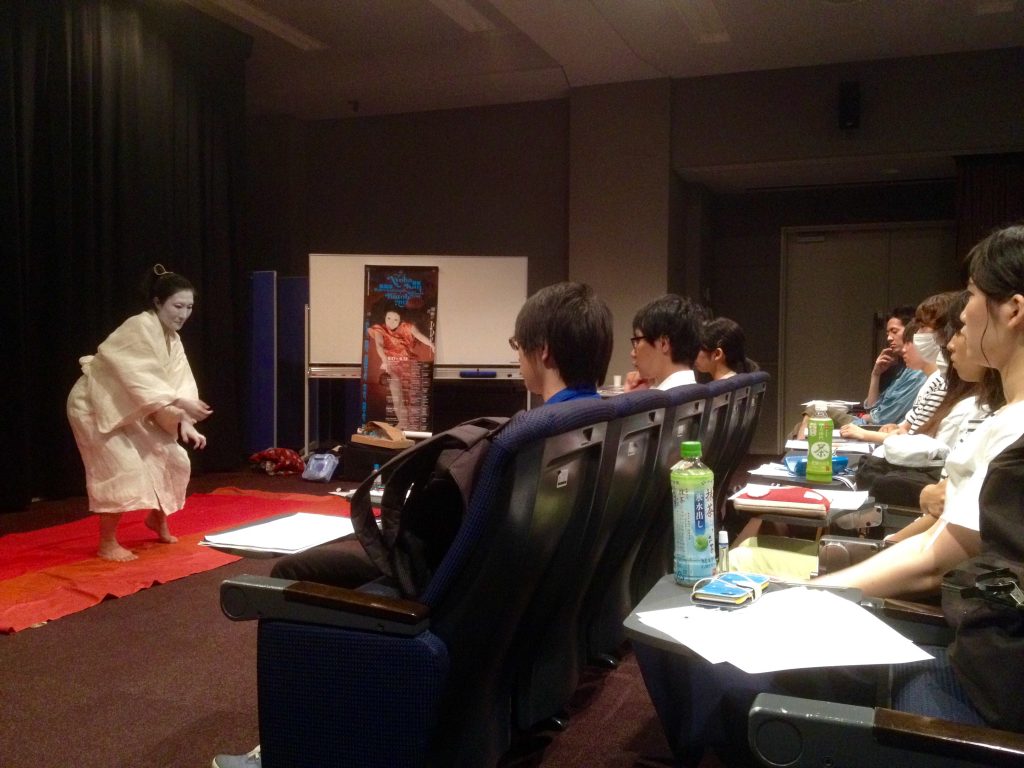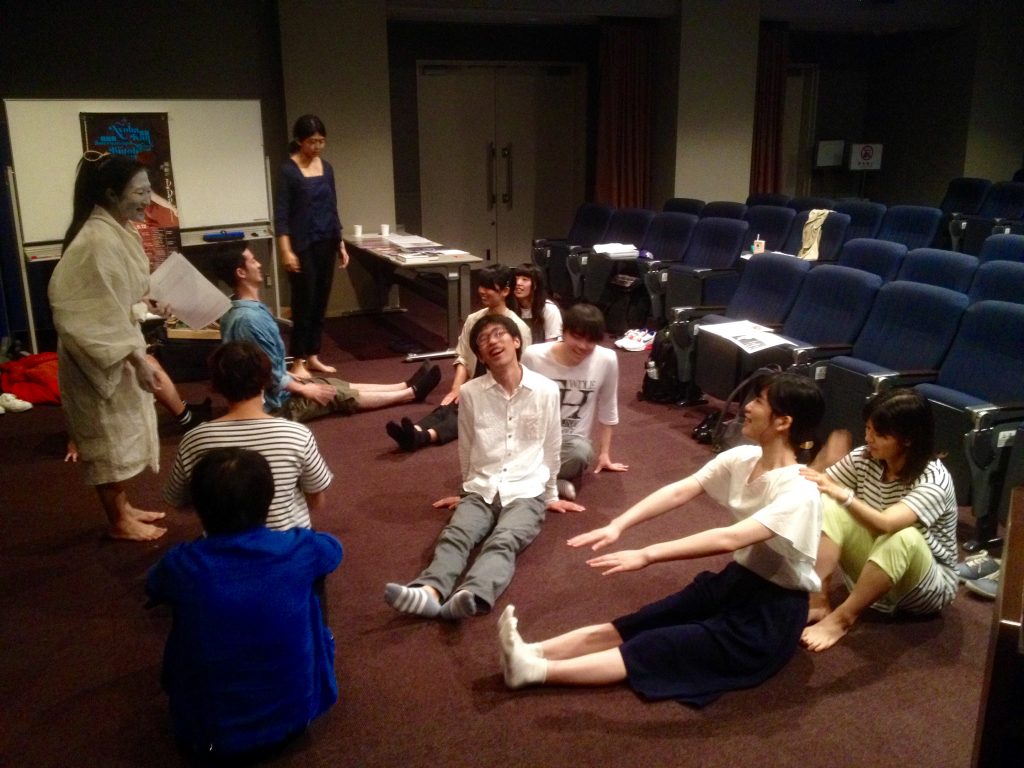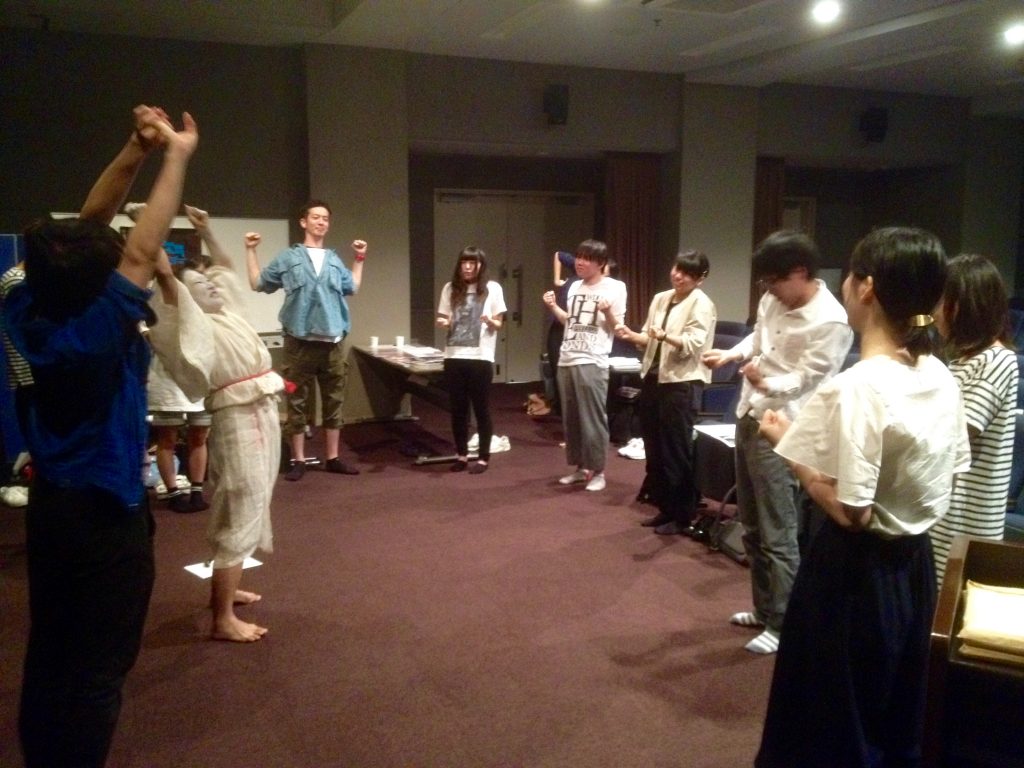






A little more than one year ago, Alex Jaimes and I collaborated on a live intermedia performance for the Opening Reception of the ACM Multimedia 2013 conference in Barcelona Spain. The video below records part of the performance, but it was made with a small pocket digital camera, using the built-in mic, and I was very preoccupied with the performance itself. Unfortunately this is the only record I have of the performance.
It was held October 24, 2013 at the Foment de les Arts i del Disseny, which is housed in an ancient stone building next to Barcelona’s Contemporary Art Museum. We worked with contemporary dancer Laida Azkona and violinist Paloma de Juan who was one of Alex’s colleagues at Yahoo Research Labs in Barcelona. Paloma’s day job is research engineer, whereas Laida is a profession contemporary dancer who has studied and performed around the world.
Again the quality of this video recording is not good, but perhaps it gives some impression of the performance.
The next video is from the first rehearsal for the live performance. Alex, Laida, and I met at my apartment the same day I arrived in Barcelona and we had our first rehearsal a day or two later. We had two more rehearsals after that, which includes a brief one after we had setup and sound-checked on the day of the opening reception. Since Alex and I worked remotely we could not prepare much beforehand, though I had already written and tested the programs needed for capturing movements and converting them to OSC for controlling the video projections. The video clips themselves were edited at the last moment, partly during a visit to Alex’s home in Barcelona. It was a busy but exciting trip!
The best Gangnam parody!
Some excerpts from performances at the Institut français du Japon and nearby Yoshida-jinja as part of this year’s Nuit Blanche event.
This video records a really nice use of interactive real-time audio-visual effects in a dance performance by the Australian company Chunky Move. Interactive system design is by Frieder Weiss.
This short video by Daniel Franke & Cedric Kiefer is one of the most aesthetically impressive uses of the Microsoft Kinect I have seen yet. Apparently they used three Kinects. Not sure whether the visuals could be rendered in real time because there is clearly interpolation between the 3D views involved in producing this video. Also for real-time use this probably involves programming in C++, or at least Openframeworks. For anyone interested in the Kinect, it’s worth trying to find out more about what went into producing the video. Some links are given:
onformative.com
chopchop.cc
There’s full quality version of the video available online:
daniel-franke.com/unnamed_soundsculpture.mov
And a ‘making-of’ video on Vimeo:
Here is a statement by the artists:
The basic idea of the project is built upon the consideration of creating a moving sculpture from the recorded motion data of a real person. For our work we asked a dancer to visualize a musical piece (Kreukeltape by Machinenfabriek) as closely as possible by movements of her body. She was recorded by three depth cameras (Kinect), in which the intersection of the images was later put together to a three-dimensional volume (3d point cloud), so we were able to use the collected data throughout the further process. The three-dimensional image allowed us a completely free handling of the digital camera, without limitations of the perspective. The camera also reacts to the sound and supports the physical imitation of the musical piece by the performer. She moves to a noise field, where a simple modification of the random seed can consistently create new versions of the video, each offering a different composition of the recorded performance. The multi-dimensionality of the sound sculpture is already contained in every movement of the dancer, as the camera footage allows any imaginable perspective. The body – constant and indefinite at the same time – “bursts” the space already with its mere physicality, creating a first distinction between the self and its environment. Only the body movements create a reference to the otherwise invisible space, much like the dots bounce on the ground to give it a physical dimension. Thus, the sound-dance constellation in the video does not only simulate a purely virtual space. The complex dynamics of the body movements is also strongly self-referential. With the complex quasi-static, inconsistent forms the body is “painting”, a new reality space emerges whose simulated aesthetics goes far beyond numerical codes. Similar to painting, a single point appears to be still very abstract, but the more points are connected to each other, the more complex and concrete the image seems. The more perfect and complex the “alternative worlds” we project (Vilém Flusser) and the closer together their point elements, the more tangible they become. A digital body, consisting of 22 000 points, thus seems so real that it comes to life again.
The Australian Dance Theatre recently premiered PROXIMITY, a dance production using live video and visual effects. More information about the production is available in an article at the Create Digital Motion blog.